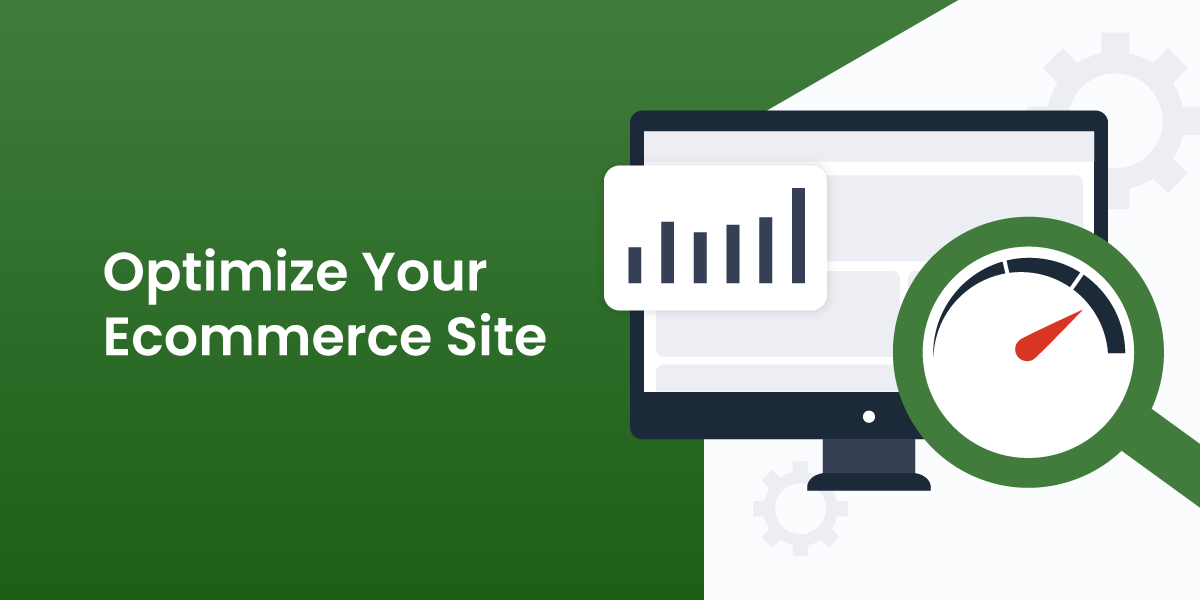4 Ways to Optimize Your Ecommerce Site for Maximum Performance
In today's digital age, having a well-optimized ecommerce site is crucial for success. With fierce competition in the online marketplace, it's essential to ensure that your site performs at its best to attract and retain customers. In this article, we will explore four ways to optimize your ecommerce site for maximum performance. Let's dive in!
Understanding Ecommerce Site Optimization
Before we delve into the strategies to optimize your ecommerce site, it's important to understand the significance of ecommerce optimization. Ecommerce optimization refers to the process of improving various elements of your site to enhance its performance, user experience, and search engine visibility. By implementing optimization techniques, you can increase your site's loading speed, reduce bounce rate and site exits, improve user engagement, boost conversion rates, and ultimately drive more sales.
The Importance of Ecommerce Optimization
Optimizing your ecommerce site is crucial for several reasons. Firstly, site performance plays a significant role in user satisfaction. Slow loading times can lead to frustration and increased bounce rates. Imagine a potential customer visiting your site, excited to explore your products, only to be met with a sluggish loading experience. This can immediately discourage them from making a purchase and drive them to your competitors.
Additionally, search engines like Google consider site speed as a ranking factor, making it essential for search engine optimization (SEO). When your site loads quickly, search engines can crawl and index your pages more efficiently, resulting in improved visibility on search engine result pages (SERPs). This increased visibility can attract more organic traffic to your site, increasing the chances of potential customers discovering your products or services.
Moreover, an optimized site enhances user experience, making it easier for visitors to navigate and find what they're looking for. Imagine having a cluttered and confusing website layout, with products scattered all over the place, and no social proof on product pages to improve trust in shoppers. Your customers would have a hard time finding what they want and possibly feel unsure about making a purchase, leading to frustration and a high likelihood of them leaving your site without making a purchase.
A well-optimized ecommerce site, on the other hand, offers a seamless shopping experience. With clear navigation menus, intuitive search functionalities, well-organized product categories, and product pages displaying reviews and Q&A content to help customers learn about your solutions and trust your brand, customers can effortlessly find and learn about the items they desire. This leads to higher customer satisfaction and increased chances of conversion.
Key Elements of Ecommerce Site Performance
To optimize your ecommerce site for maximum performance, you need to focus on key elements that impact its overall functionality. These elements include site speed, user experience (UX), mobile optimization, and SEO.
Site speed is a critical factor in ecommerce optimization. A fast-loading site not only enhances user experience but also reduces the likelihood of visitors abandoning their shopping carts. Studies have shown that even a one-second delay in page load time can result in a significant drop in conversion rates. By implementing techniques such as image optimization, caching, and minifying code, you can significantly improve your site's loading speed.
User experience is another crucial element to consider. Your ecommerce site should be designed with the user in mind. This means having clear and intuitive navigation menus, easy-to-use search functionalities, and visually appealing product pages that offer ample social proof in the form of customer reviews and video reviews. You can also increase customer satisfaction by providing Q&A content that helps them feel confident buying from you. By providing a seamless and enjoyable browsing experience, you can keep visitors engaged and encourage them to explore more of your offerings.
Mobile optimization is also vital in today's digital landscape. With the increasing use of smartphones and tablets for online shopping, it's essential to ensure that your ecommerce site is mobile-friendly. Responsive design, fast-loading mobile pages, and mobile-specific features such as click-to-call buttons can enhance the mobile user experience and drive more conversions.
Lastly, SEO plays a crucial role in ecommerce site optimization. By implementing SEO best practices such as keyword research, optimizing meta tags, adding Q&A to product pages, and creating high-quality content, you can improve your site's visibility in search engine results. This increased visibility can attract more organic traffic, leading to higher chances of conversions and sales.
By strategically improving these key elements, you can create a seamless shopping experience for your customers, resulting in increased customer satisfaction, higher conversion rates, and ultimately, a thriving ecommerce business.
1. Improve Site Speed
Site speed is one of the most critical factors for ecommerce success. Slow loading times can significantly impact user experience and even result in lost sales. Research shows that even a one-second delay in page load time can lead to a 7% reduction in conversions. To improve site speed, consider the following:
Why Site Speed Matters in Ecommerce
Site speed matters because it directly affects user experience, conversion rates, and search engine rankings. Slow-loading pages frustrate visitors and deter them from making a purchase. Additionally, search engines like Google prioritize fast-loading sites, meaning that a slow site could receive lower rankings in search results.
When a user visits an ecommerce website, they expect a seamless and speedy experience. In today's fast-paced digital world, people have become accustomed to instant gratification. If a website takes too long to load, users are more likely to abandon it and look for alternatives. This not only results in lost sales for the ecommerce business but also a negative perception of the brand.
Furthermore, slow site speed can have a detrimental effect on conversion rates. When potential customers encounter slow-loading pages, they may lose interest or become frustrated, leading them to abandon their shopping carts and leave without making a purchase. This can directly impact the revenue and growth of an ecommerce business.
In addition to user experience and conversion rates, site speed also plays a crucial role in search engine optimization (SEO). Search engines like Google consider site speed as a ranking factor. They prioritize fast-loading websites because they provide a better user experience. Therefore, a slow site may receive lower rankings in search results, making it harder for potential customers to find the ecommerce business.
Practical Tips to Increase Site Speed
Here are some practical tips to increase site speed:
1. Optimize image sizes by compressing them without sacrificing quality.
Images are an integral part of any ecommerce website, but large image files can significantly slow down page load times. By optimizing image sizes through compression techniques, you can reduce the file size without compromising the visual quality. This allows for faster loading times and a smoother user experience.
2. Minify CSS and JavaScript files to reduce their file size.
CSS and JavaScript files are essential for the functionality and design of a website. However, they can also contribute to slower loading times if they are not optimized. Minifying these files involves removing unnecessary characters, spaces, and line breaks, reducing their overall size. This optimization technique helps to improve site speed by reducing the amount of data that needs to be transferred from the server to the user's browser.
3. Utilize browser caching to store static files and reduce server response time.
Browser caching is a technique that allows certain files, such as images, CSS, and JavaScript, to be stored locally on a user's device. When a user revisits a website, the browser can retrieve these files from the cache instead of making a request to the server. This reduces server response time and improves site speed, as the browser does not need to download the same files repeatedly.
4. Choose a reliable hosting provider that offers fast server response times.
The hosting provider you choose plays a crucial role in site speed. A reliable hosting provider will have fast server response times, ensuring that your website loads quickly for visitors. It is essential to research and select a hosting provider that offers high-performance servers and has a reputation for reliable and fast service.
2. Enhance User Experience (UX)
User experience is vital for ecommerce success, as it directly impacts how visitors interact with your site and ultimately influences their purchase decisions. To enhance user experience on your ecommerce site, consider the following:
The Role of UX in Ecommerce Success
User experience plays a crucial role in determining whether visitors stay on your site, explore your products, and complete a purchase. A positive user experience can build trust, encourage repeat visits, and foster customer loyalty.
Strategies to Improve UX on Your Ecommerce Site
Here are some strategies to improve UX on your ecommerce site:
- Create a user-friendly navigation menu that allows visitors to easily find products and information.
- Optimize your site's search functionality to deliver accurate results and filter options.
- Ensure that your product pages provide detailed descriptions, high-quality images, and customer reviews.
- Add a Q&A widget to product pages so that customers can get immediate answers to frequently asked questions, reducing their concerns.
- Simplify the checkout process by reducing the number of steps and offering guest checkout options.
3. Optimize for Mobile
In today's mobile-dominated world, optimizing your ecommerce site for mobile devices is no longer optional—it's a necessity. With more and more people using smartphones and tablets to browse and shop online, neglecting mobile optimization can result in lost sales. Consider the following when optimizing your site for mobile:
The Growing Importance of Mobile Optimization
Mobile optimization is essential because it allows your site to adapt seamlessly to different screen sizes and devices. A mobile-friendly site not only provides a better user experience but also improves your chances of ranking higher in mobile search results.
How to Make Your Ecommerce Site Mobile-Friendly
To make your ecommerce site mobile-friendly, follow these best practices:
- Implement a responsive design that automatically adjusts your site's layout and content based on the device being used.
- Ensure that your site's buttons and links are easy to tap, and text is legible without zooming.
- Optimize your site's loading speed on mobile devices by reducing file sizes and eliminating unnecessary scripts.
- Create a mobile-friendly menu that is easy to navigate on smaller screens.
4. Implement SEO Best Practices
Implementing search engine optimization (SEO) techniques is crucial to increase visibility and organic traffic to your ecommerce site. By following SEO best practices, you can rank higher in search engine results pages (SERPs) and attract relevant visitors. Consider the following when optimizing your site for search engines:
Understanding SEO in Ecommerce
SEO in ecommerce involves optimizing your site's content, structure, and technical elements to make it more visible to search engines. By focusing on relevant keywords, user experience, and backlinking, you can improve your rankings and drive organic traffic to your site.
SEO Techniques for Ecommerce Sites
Here are some effective SEO techniques to implement on your ecommerce site:
- Conduct keyword research to identify relevant keywords and integrate them into your site's content.
- Optimize your meta tags, including title tags and meta descriptions, to accurately reflect each page's content.
- Create unique, high-quality product descriptions that provide valuable information and include relevant keywords.
- Build backlinks from reputable sources to enhance your site's authority and visibility.
- Add customer reviews to product pages, increasing the use of valuable keywords and long-tail key phrases.
- Add search-optimized Q&A to your website pages, boosting your chances of gaining the coveted Featured Snippet on the search-engine results page.
By implementing these four strategies, you can optimize your ecommerce site for maximum performance. Improving site speed, enhancing user experience, optimizing for mobile, and implementing SEO best practices will help attract more visitors, increase conversions, and ultimately drive the success of your ecommerce business. So, don't wait—start optimizing your site today!

 Drive More Visibility, Traffic, and Sales
Drive More Visibility, Traffic, and Sales
